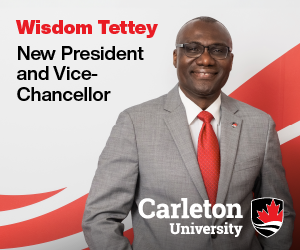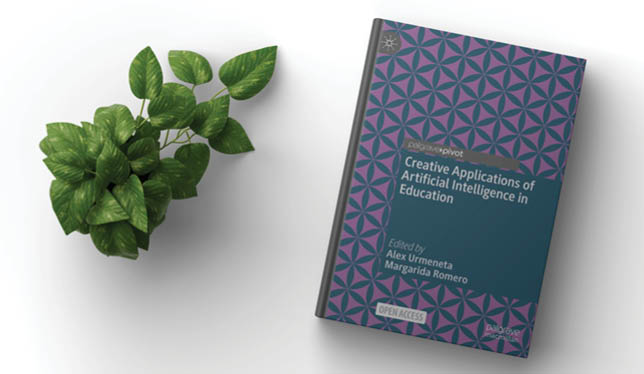Teaching and learning centres are the academic heroes of COVID-19
These centres have proven they are not mere “support” units but are crucial to the university’s mission.

During the COVID-19 pandemic, teaching and learning centres (TLCs), and the educational developers and instructional designers who work at them, have shown the deep value they bring to their institutions. During the crisis, they have become instructional superheroes who have not only supported an unprecedented “pivot” to online and remote learning, they have taken the lead in ensuring universities stay open.
Academics and staff at TLCs across the country worked with faculty to transition tens of thousands of courses to remote delivery through March and April. Universities are taking notice, documenting and sharing the work done by these centres to make remote learning happen quickly. News reports from Simon Fraser University, the University of Calgary, Brock University and Concordia University, to name a few, highlight the important role TLCs have played since mid-March to ensure that Canada’s universities have continued to support students through to the end of term and beyond.
The rapid transition to online and remote learning has been disruptive for students, faculty, staff and administrators, but some institutions have adapted better and more easily than others. Here’s why:
Senior leaders dedicated to teaching and learning: Institutions with an identified vice-provost of teaching and learning, or equivalent, were better positioned to respond during the COVID-19 crisis. Individuals in these roles have provided advice to the highest levels of institutional leadership and provided guidance to the teaching and learning centres within their portfolios.
Dedicated teaching and learning centres: Institutions with well-staffed teaching and learning centres have provided a rapid response during an educational crisis. Educational developers, instructional designers and others whose jobs focus on enhancing teaching excellence have facilitated a rapid transition of courses to online. Though the exact titles vary from one university to another, they share a common mission to enhance teaching and learning on their respective campuses. Institutions without centres of excellence for teaching and learning may have found themselves struggling to pivot to online and remote learning more so than their counterparts with established TLCs.
Institutional commitment to teaching and learning: Institutions that have worked to ensure that the value of teaching and learning is recognized are faring better than those who have ignored it. Examples of institutional commitment to recognize and value teaching and learning include: establishing a TLC; appointing leadership, faculty and staff roles dedicated to teaching and learning; encouraging or insisting upon teaching dossiers for hiring, tenure and promotion; and finding innovative ways to assess teaching effectiveness beyond quantitative surveys.
Every individual faculty member and teaching assistant who has worked hard to transition their courses to remote learning during the winter 2020 term deserves credit for their efforts. But let’s be honest, many faculty members have turned to their teaching and learning centres for help, training and resources. The academics and staff dedicated to teaching and learning responded by developing new website content, online training, webinars and resources of all kinds at breakneck speed. There has been an intensified focus on how to deliver quality online and remote instruction, fair and effective assessment, academic integrity and overall instructional effectiveness.
In some cases, those working at TLCs have literally rescued faculty members who otherwise would have been pedagogically paralyzed. As a result, many instructors have managed to do what they might never have imagined possible. Although most faculty members would still prefer to teach face-to-face, the reality is that many have quickly learned new instructional and delivery skills. As a result, hundreds of thousands of postsecondary students across the country finished their courses, and in many cases completed their programs, because professors continued teaching. They have not done it alone. TLC colleagues have empowered them to adapt quickly and with as little disruption as possible.
Because of the coronavirus crisis, postsecondary pedagogy is being recognized and valued in ways it never has before. Although research remains crucial in the quest to find a vaccine and cure for COIVD-19, and other research continues to remain essential, it is fair to say that we are recognizing that teaching can no longer be regarded as secondary to research in higher education.
Institutions that have invested heavily in teaching and learning are reaping the rewards now. Let this be a lesson about the value of teaching and learning in higher education, not only during times of crisis, but as part of the fundamental worth of postsecondary institutions. Let’s be clear, teaching and learning centres are not “support” units. They are crucial to the value proposition of higher education institutions.
Sarah Elaine Eaton is an assistant professor in the Werklund School of Education at the University of Calgary.
Featured Jobs
- Indigenous Studies - Faculty PositionUniversité Laval
- Electrical and Computer Engineering - Assistant/Associate ProfessorWestern University
- Accounting - Tenured or Tenure-Track Faculty PositionUniversity of Alberta
- Psychology - Assistant Professor (Social)Mount Saint Vincent University
- Electrical Engineering - Assistant Professor (Electromagnetic/Photonic Devices and Systems)Toronto Metropolitan University















Post a comment
University Affairs moderates all comments according to the following guidelines. If approved, comments generally appear within one business day. We may republish particularly insightful remarks in our print edition or elsewhere.